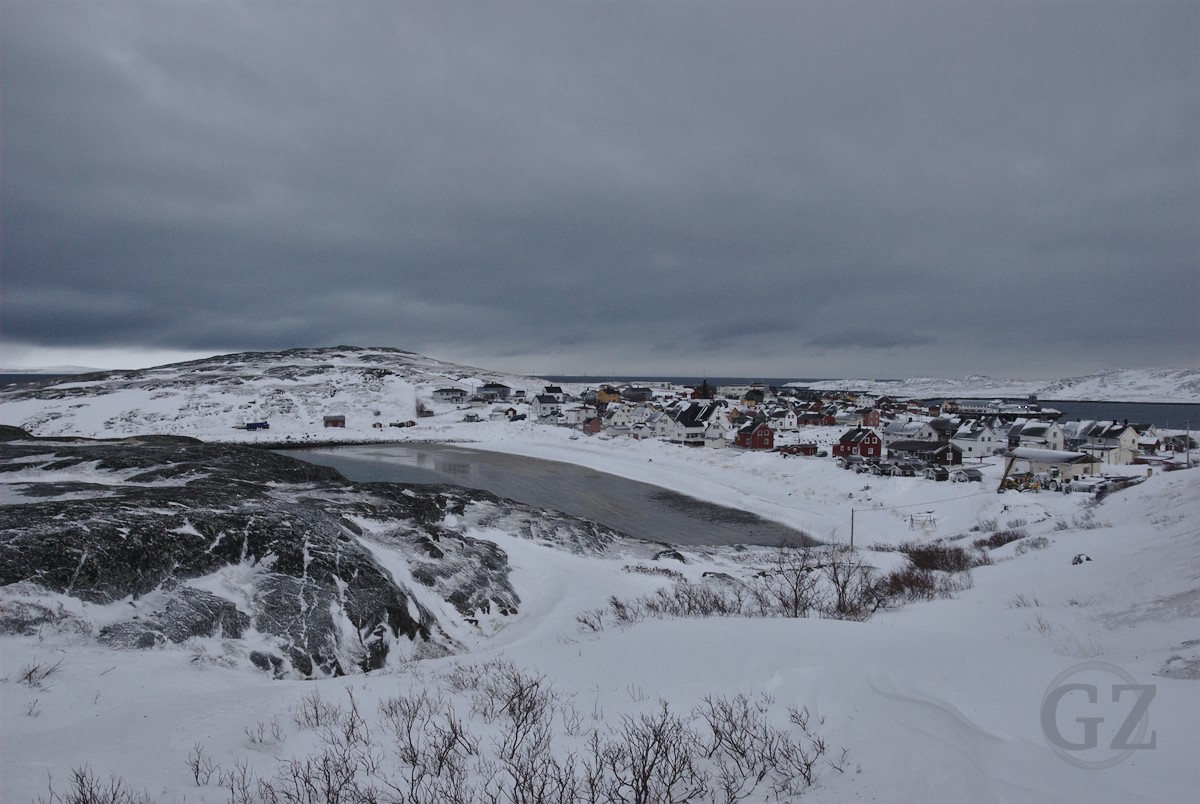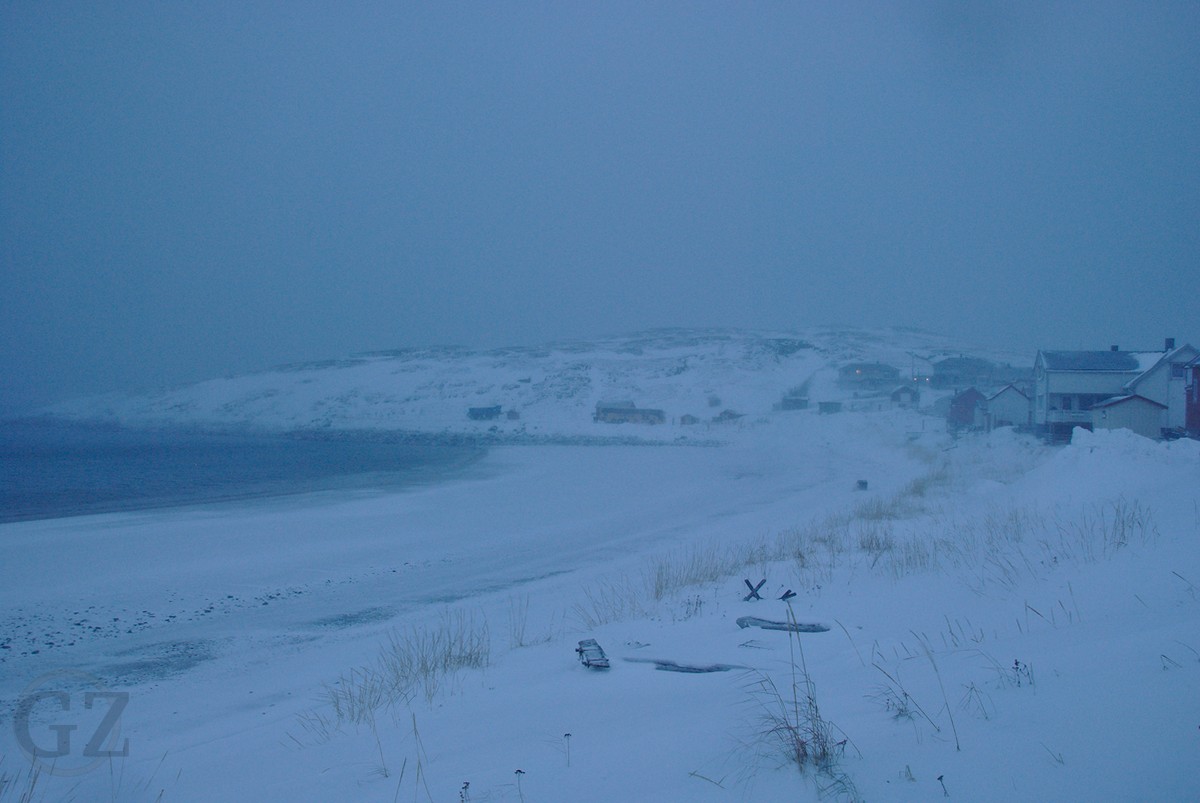It was in the mid 18th century that Finnish settlers moved to the southeastern tip on the Varanger fjord, in the eastern part of Finnmark and not far from Norway’s border to the Russian Federation, where they established the village Bugøynes. Favored by the warmth of the Gulf Stream, fishing boats can go out to the sea the whole year around, which is why harvesting marine living resources has always played a crucial role in the village's subsistence. Until the 1980s fisheries, in particular the harvest of cod, was in the center of the flourishing village development. In the end of the 1970s, when Bugøynes saw its economically best days, up to 400 people where living in the village. However, with the collapse of the cod stocks in 1982 also the local fish production collapsed, putting heavy stress on the village’s survival. In 1989 this led some of the inhabitants came together to write an advertisement for one of the biggest Norwegian tabloid newspapers, where in their despair they put the whole village for sale. At this point the inhabitants were ready to move anywhere in Norway where they would be welcome.
Yet, due to the village’s history this would have been a drawback for the cultural diversity in the region: Many of the inhabitants, particularly older generations, still speak the Finnish dialect of their ancestors. According to a local resident, approximately 70% of the elderly people speak Finnish. It is an old variant of Finnish though, which long has disappeared in Finland, replaced by a reformed and “more modern” variant, as a Bugøynes inhabitant explains. If the village would have ceased to exist, she is afraid, the language might have gone as well. For many locals the language is an important marker of their identity. Though, it is not only language that defines the local identity, and which welds together the community. Also other characteristics which a local residents describes as typical Finnish survived: For example, as one local resident proudly explains that “we have a much stronger sauna culture than it is common in Norway,” adding that almost every household has its own sauna.
And it seems that some locals feel that particularly these characteristics make the inhabitants and the local culture culture unique, but also may have helped the community to survive: While no one laid an offer when the residents put the village for sale, from one day to the other many people outside the area became aware of it. The sudden increase in interest has substantially contributed to its revival: Until today it is predominantly Finnish people who come to visit Bugøynes – or Pykeijä, as it is called in Finland – and whose interest triggered the start of tourism activities. As one Finnish tourist, who I met during my stay in Bugøynes, explained, she enjoys to listen to this old variant of Finnish, which does not exist anymore in her home country. Also a local tourism entrepreneur explains that some clients have emphasized how nice it feels to hear again the language their grandparents spoke. Even though it is possible for pupils to study Finnish in the local school, some elderly residents are still afraid that the old variant of Finnish is severely threatened from extinction: In school the children are taught the modern Finnish, as it is spoken also in nowadays Finland.
One of the other attractions Bugøynes has to offer for its increasing amount of tourists is its “Arctic Ocean Sauna,” located on the bright and fine grained sand beach on the Varanger fjord. From Finland every year dozens of buses are driving down the narrow and windy road to Bugøynes, which are often loaded with students that once in their life want to experience the exotically appearing swim in the Arctic Ocean. Of course in combination with the local sauna. In 2015 3000 visitors came to enjoy the sauna, in 2016 it was 4000, and for 2017 already 6000 visitor are expected. While the visitors originally mainly came from Finland, increasingly also guests from other regions, such as from Asia, are setting up for a visit. Besides the unique sauna experience the village offers another popular tourist attraction, which cannot be conducted everywhere in Norway: King Crab safaris.
Towards the end of the 19th century king crabs have artificially been introduced in the waters in front of the Murmansk oblast. While seen as great economic opportunity in Russia, the Norwegian government treats king crabs as an invasive species. In the western part of Norway king crabs can be harvested unrestrictedly, whereas in the eastern part a quota system has been implemented. A local fisherman explains that with the maximally allowed catch one can not earn enough money for subsistence. However, with the allowed quota a fisher can make around 10% of the yearly income. Thus, it is a welcomed opportunity along the cod harvest, even though cod once again dominates the local fisheries after the stocks have returned to the region’s waters. Thanks to the vicinity of the Murmansk region, where the king crabs have been introduced, it was in the village of Bugøynes where Norwegian trade with king crabs started. Today, living crabs are getting exported from Bugøynes to the global markets, as the village hosts one of the main harbors for king crab fishing in Norway.
Other local economic activities include the establishment of a bistro, which is new for the village where until recently no possibility existed to go out for having a meal. In a newly opened gallery some small concerts are taking place, bringing cultural events from outside the region to its inhabitants and guests. The gallery also became the venue for a few local residents to celebrate the last Finnish independence day, as a local residents smilingly tells. But also a small fish factory exists again in Bugøynes, even if only employing a few residents. After some struggle the community of Bugøynes managed to get a retirement home into village, which not only provides jobs as well as training opportunities, but which is particularly important for some of the elderly residents: Some of the inhabitants were afraid that if they would have to live in a retirement home away from Bugøynes, they would not be able anymore to speak Finnish, but forced to communicate in Norwegian with the staff. Thanks to the local health service they can now enjoy the surrounding environment they love and listen to the familiar sound of the local fauna which they are used to. Today there are approximately 180 permanent residents living in the village, which is much more than the 100 during the village’s most difficult time. Yet, some of the residents are still concerned about the Bugøynes’ future. On the one hand, the aging population led to the effect that due to lack of work force foreigners had to be employed. And on the other hand, people are afraid that their old variant of Finnish may die out soon. Not only are the school children taught modern Finnish, but as one of the elderly residents explains, the increasing amount of tourists from Finland let them speak more modern Finnish rather than our own language variant.
The once thriving village of Bugøynes almost went down due to changes in the cod stock distribution. Many of the inhabitants, which speak and old and rare version of the Finnish language and which is important for the residents’ common identity, were afraid that with the village’s troubles also the unique culture is threatened to extinct. Yet, after a significant population decrease, the village managed to get up on its feet again. Partly this betterment can be traced down to a diversification of the local economy, but also investments in local health services increased live quality and also provided employment. Nonetheless, outside influences as well as an aging population are still perceived as a threat to the survival of the village’s culture. Because of these cultural peculiarities – which shape the local common identity – proved to be the kit that hold together the village during its most difficult times, it is why some residents are willing to continue to their effort to keep alive Bugøynes’ unique culture.



